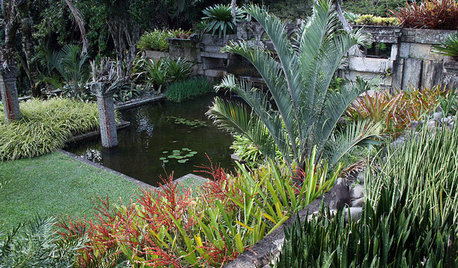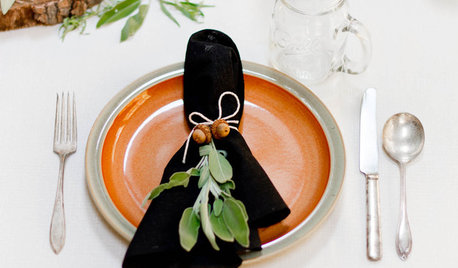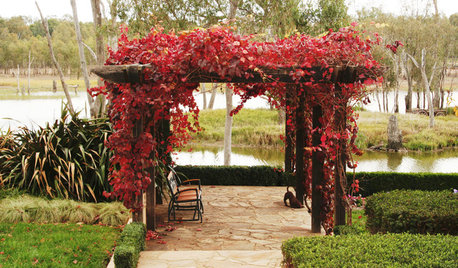I had this saved, along with a link to the thread. Now the link said something like cannot access. I'm pasting what I have here. For some reason paragraphs get smashed together.
OkieTexan (7b)(Zone 7)
I just stumbled across this Seed Starting Plan by Rodale's. Suddenly hit me that I probably should organize my efforts (oh the horror!) to make sure I start the right things at the right times. Does anyone have any recommended methods or organizational charts like this?Comments
Okiedawn OK Zone 7
One way to start is with OSU's Oklahoma Garden Planning Guide. For each veggie, it shows a range of dates during which the plants can be put into ground OR direct-seeded into the ground depending on the preferred method for that specific vegetable. The range of dates for winter/spring planting date will look something like this: February 10 - March 10. The earliest date is for folks in the warmest part of the state---far SE OK, and the last date is for folks in the coldest part of the state---far NW OK. The rest of us chose a date somewhere in the middle that seems best for us based on on location within the state. So, once you look at that list and understand when everything needs to go into the ground, look at whether they suggest you use transplants or direct seeding.If transplants are required, figure out how many weeks in advance you need to sow seeds inside to get plants the size you want by transplant time. That tells you when to start your seeds.You should base your estimates on the last average frost date for your county. If you don't know what it is, let me know and I'll post the AFD map or county data specific to your county.For transplants that take a long time to grow, like peppers, tomatillos and eggplants, I like to start those 12 weeks before I am going to transplant them.For tomatoes, I usually start seeds indoors on Super Bowl Sunday with the idea being that I'll put them in the ground around mid- to late-March.For brassicas like cabbage and broccoli, I start those about 5 weeks before my intended transplant date. Most years I aim to put the in the ground in earliest April, but if winter is warm, I put them in the ground in earliest March. So, the time I am making that decision usually is by late January so I can start brassica seeds earlier than normal if we are warming up earlier than usual like we did last year.Having said all the above,. I am super flexible and don't have any hard and fast sort of schedule because.....Even though we know our average last freeze or frost dates, we have no idea when our last very cold night will occur in any given year. In the years since we moved here from Texas in 1999, my last freeze has occurred anywhere from early to mid-February to late April or even the first week in May. So, it is hard to guess when to plant some things. Instead of looking at a calendar, plotting out some sort of plan or schedule, and trying to implement it, I watch for signs from Mother Nature. For example, I can plant sweet corn once the leaves on the white oaks are the size of a squirrel's ear. (Yep, go ahead and laugh, but it almost never freezes after that....maybe once in a decade.) I watch for certain cool-season weeds to sprout or to bloom. If they are earlier than normal, I will start seeds earlier than normal. I watch for the pecan trees to flower. I observe the behavior of wild birds, insects, reptiles, amphibians and mammals. If the weather is warming up quickly and early, all of them are out and more active than normal for that specific time of the year.I don't think I ever have had a written schedule, but to be fair, I am a lifelong gardener and just do things by feel/by the seat of my pants/or by intuition at this point. So, my calendar or schedule is in my head and something activates it based on what I am observing in the natural world. When I was newer to gardening, I based a lot off of last frost dates, but back then I lived somewhere where the last frost date seemed fairly reliable.I also was sort of set in my way with using dates based on what worked in Fort Worth when we first moved here, though we do stay cold much later here most years than we did there. So, the general dates I tried to use after planting too early in our early years here ended up being sort of a compromise between what worked for me in Fort Worth and what OSU recommends. The longer I've lived here, the more I've ignored dates and schedules and just done what feels right.I'm sure there are people here on this forum who have wonderful schedules set up on their computers in some sort of incredible organized way, perhaps in spreadsheets or whatever, that they will share with you. Me? I'm just the one who sees butterflies out visiting henbit flowers in January and says to myself "Oh crap, I need to hurry up and start seeds!" It works for me.A lot of people on this forum start seeds long before I do. There's nothing wrong with that. I simply don't like for plants to get too big or too rootbound before I put them outdoors, and I know I am in a low-lying microclimate where late cold weather often hits here after it hits folks further north. That's what I get for gardening in a low-lying creek hollow in the already low-lying Red River Valley. The weather used to drive me absolutely bonkers and I did learn that with cool-season crops, planting them a smidgen late works better for me in my microclimate than planting them early, but that most warm-season plants work better for me if I plant them a bit early.Another way to try it? Track your soil temperatures. When you read Dr. Cotner's book, note that for each veggie, he'll talk about the temperature range when it grows best. He'll also sometimes say that you shouldn't plant Item A until soil temperatures hit a certain threshold. I've internalized a lot of that, and I know, based on how cold my soil temperature is at any given time, just where I ought to be in the seed-starting or transplanting process at that point. I have learned the hard way that planting early only works for me if the soil temperatures are in the right range, so in a sense, my schedule for starting seeds is derived from how cold the soil is staying, or (in a warm winter) how quickly it is warming up.Even when the little voice in my head tells me that I should be starting seeds at a certain point, I often ignore the little voice in my head. Not necessarily on purpose, but just because I procrastinate and put things off sometimes.Another reason that early planting doesn't work for me is the wildlife. If the plants in my garden are the only green things around, they're going to be devoured by every creature that can reach them. I've seen wild birds peck new lettuce plants to death as quickly as they emerge from the soil So, if I am planting early, you can bet I'm either putting bird netting or row cover over hoops over the beds where tiny seedlings are emerging from the soil. I also will leave some winter weeds in beds adjacent to where the cool-season plants are growing. The winter weeds can distract the wild creatures from tiny emerging seedlings.Charles, One of my favorite seed-starting and transplanting schedules (actually it is a series of schedules) if found in John Jeavon's incredible book "How To Grow More Vegetables...." (the title alone is book-length). It not only tells you what seeds to sow weekly, but which ones to be transplanting each week. I also have used the schedules in Texas Gardener magazine. I use whatever TG zone number that Gainesville is in, because that's the TX city closest to me.Still, schedules aside, what matters to me in, let's say, the month of January is whether we're having days in the 50s and nights in the 20s or days in the 70s and nights in the 30s or 40s. The worst thing in my little world is to have flats and flats and flats of seedlings that need to go into the ground and to have the outdoor conditions not quite right for them yet. The greenhouse helps, but it gets much too hot on sunny winter days (even with 50% shade cloth covering it) for it to be a good holding place for cool-season seedlings. Seedlings that stay in containers too long get rootbound and then are slowly to adapt when transplanted.If I could sow seeds indoors whenever I wanted, I'd sow the cool-season ones on Nov 1st and the warm-season ones on Dec 1st to ensure I could rush young plants into the ground in late December through late January if we're having a warm winter. The problem is the word "if", because maybe January and February end up being extra-cold and nothing can go into the ground until early March. When I buy that handful of purchased tomato plants (usually purchased at the Lowe's in Lewisville) in late January or early February, based on their size at that point, I think their seeds were sown around November 1st....or, if cutting grown, their cuttings were rooted in early December.Young seedlings held indoors too long, even under lights, have a tendency to become etiolated (what we commonly all 'leggy') and that weakens them, so I tend to be a late planter to avoid that.One thing that I think is fun to do is to scatter-sow greens seeds on top of the soil in a prepared, raised bed around December 1st. I don't cover them with soil. I just firmly press them down into the soil and pack it down by patting it with my hands. If I water at all, I just mist lightly. Then, I leave the bed alone to see what happens. Sometimes they sprout early, sometimes they sprout late, but the timing of when they sprout tells me a lot more about my outdoor growing conditions than whatever is going on with thermometers, weather reports and forecasts. I also watch to see when poppies and larkspur (which reseed themselves here) germinate. Those sorts of things feed into my intuitive mental schedule about what to do when.Dawn














Related Discussions
Dual Leader Dawn Redwood?
Q
2014 Spring Fling/Swap
Q
My 2014 Rainfall So Far Matches 2011....
Q
NEW: Winter Sowing Swap 2014-2015
Q